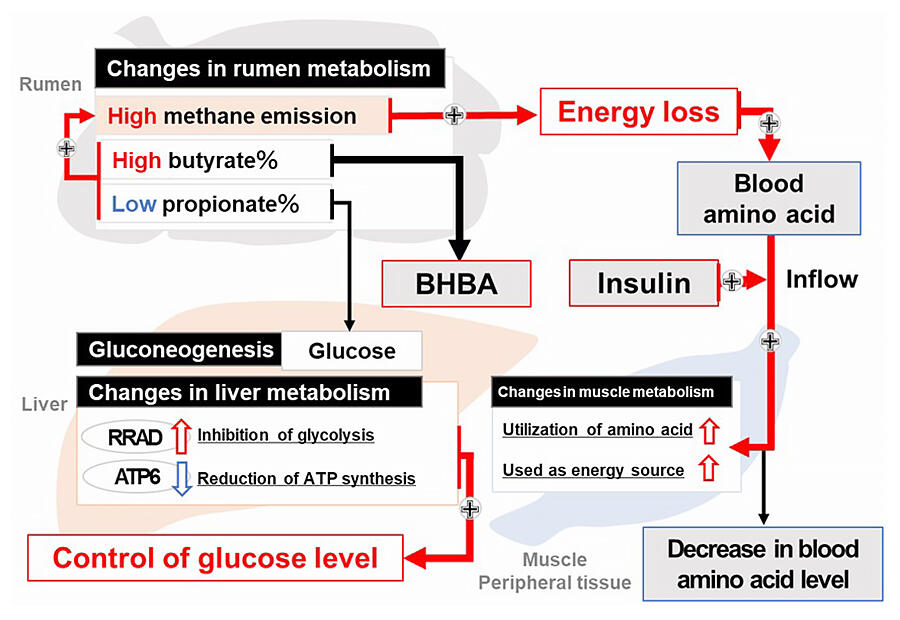The quantity of greenhouse gases emitted in Japan was 1.15 billion tons in 2022, 32.2 million tons of which (2.8%) came from the agricultural field. Methane derived from fermentation in the alimentary canals of ruminant livestock, including cattle eructation, makes up around 24% of agricultural greenhouse gases, so the livestock breeding field is seeing the development of feed that reduces methane and research on the characteristics of cattle with high and low methane emissions. For these studies, it is necessary to clarify the physiological characteristics of each individual according to their methane emissions.

Kim, M., Masaki, T., Ikuta, K. et al. Physiological responses and adaptations to high methane production in Japanese Black cattle. Sci Rep 12, 11154 (2022). https://doi.org/10.1038/s41598-022-15146-1 (CC by 4.0)
A group led by Professor Sanggun Roh of the Graduate School of Agricultural Science, Tohoku University, has worked with the Hyogo Prefectural Technology Center of Agriculture, Forestry and Fisheries to clarify that concentrations of insulin and ketone bodies in the blood and propionic acid and butyrate in rumen fluid are key factors in the prediction of methane emissions. Their work was published in Scientific Reports.
The research group tested 21 Japanese Black steers (12 months of age, average weight 335.6 ± 19.8 kg), measuring methane emissions in the early fattening (13 months), middle fattening (20 months) and late fattening (28 months) phases, and collecting blood, rumen fluid and liver tissue. The group calculated residual methane emissions from the difference between their methane measurements and the emissions estimated from feed intake, selected a high methane emission group (HME, six cattle) and a low methane emission group (LME, six cattle), and compared the blood components, rumen fluid characteristics and liver transcriptomes of each group. They also used feeding performance such as the average weight gain in a day during fattening phases and carcass traits such as carcass weight, BMS number and rib-eye area to comprehensively analyze the physiological metabolic information.
Their results showed that blood insulin and ketone bodies were high in the HME group, and that amino acid levels were high in the LME group. When it came to rumen fluids, the HME group had low propionic acid and high butyrate levels. The group confirmed differences in the genetic expression of ATP6 and RRAD, which is associated with glucose metabolism, when comparing liver transcriptomes. They did not confirm any significant differences in feed performance or carcass traits.
These results suggest the possibility that high methane emission cattle actively use in vivo amino acids to compensate for energy loss due to methane production, and that insulin encourages the movement of amino acids from the blood to tissues. On the other hand, in the liver, it is thought that the expression of genes relating to glucose metabolism is regulated in accordance with the increase in methane emissions, thus maintaining the in vivo glucose concentration.
The physiological parameters that were clearly associated with methane production in this research could be used to develop techniques to reduce methane in Japanese Black cattle. Moreover, it is hoped that the relationship between methane production and physiological characteristics will provide new perspectives for research on methane reduction.
Journal Information
Publication: Scientific Reports
Title: Physiological responses and adaptations to high methane production in Japanese Black cattle
DOI: 10.1038/s41598-022-15146-1
This article has been translated by JST with permission from The Science News Ltd.(https://sci-news.co.jp/). Unauthorized reproduction of the article and photographs is prohibited.




